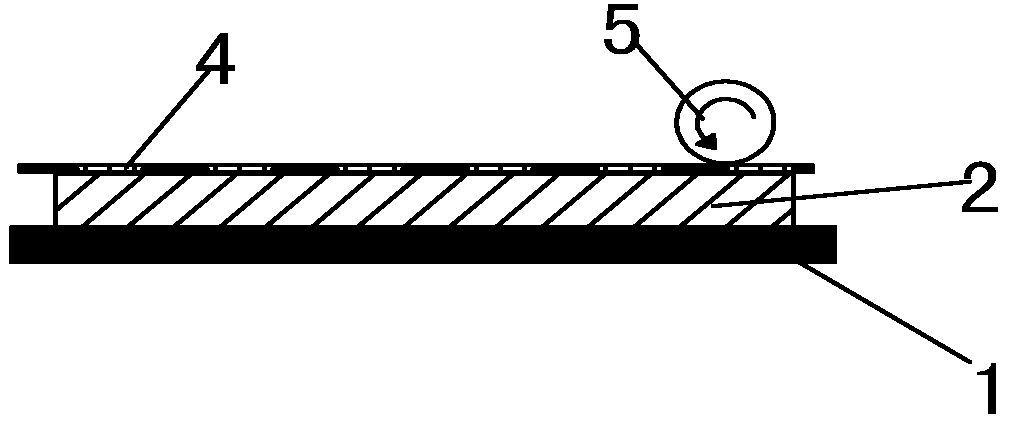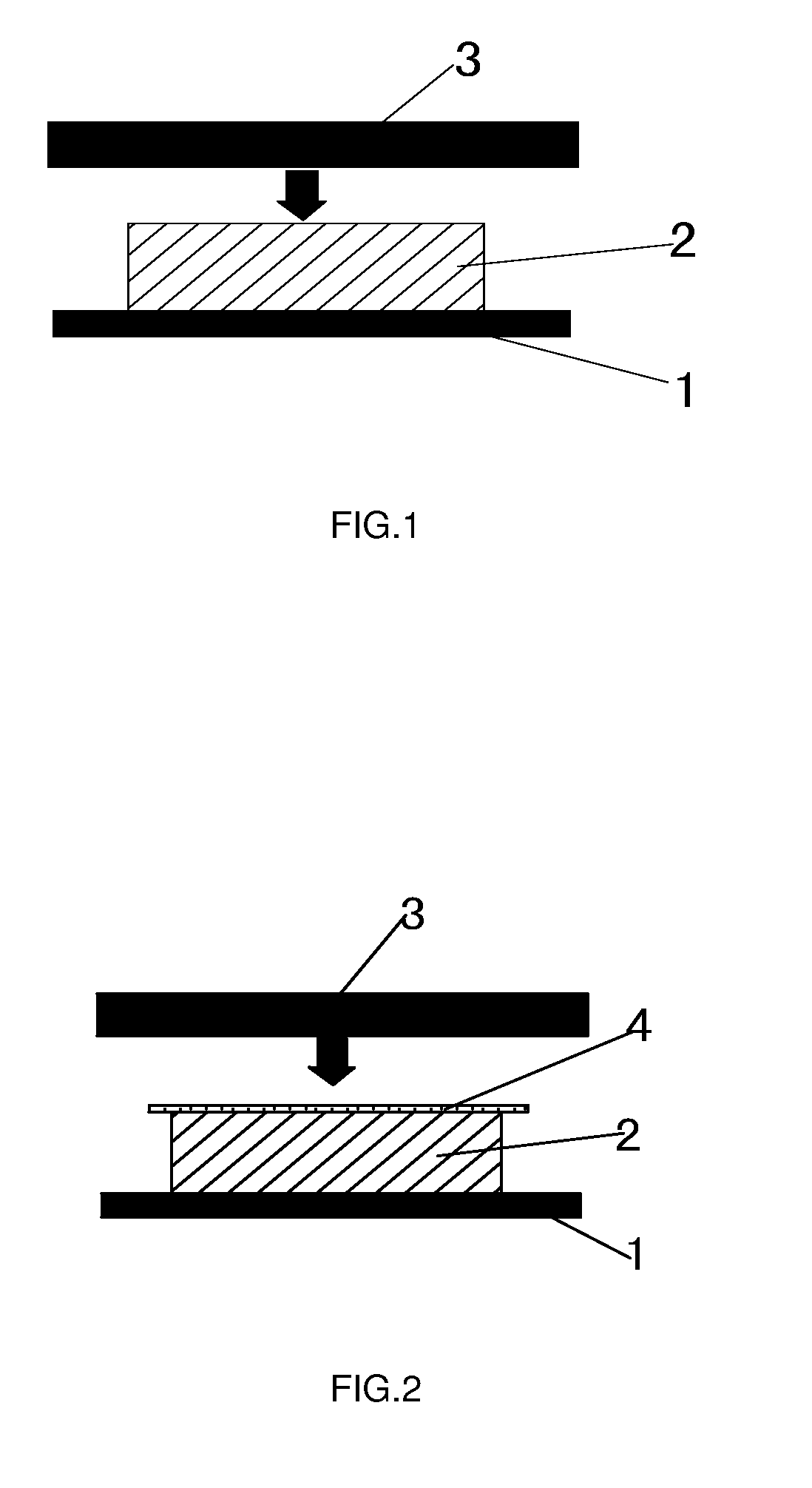Method for processing stamp material
a stamp material and hot press technology, applied in the field of hot pressing method for processing stamp materials, can solve the problems of prolonged time for ink to seep into the print surface, low ink injection efficiency, etc., to achieve the effect of increasing the density of the surface material, and reducing the size of the micropor
- Summary
- Abstract
- Description
- Claims
- Application Information
AI Technical Summary
Benefits of technology
Problems solved by technology
Method used
Image
Examples
first embodiment
[0020]Referring to FIG. 1, a pressing process is illustrated in carrying out the present method for processing a stamp material. A stamp material 2 is placed on a planar table 1. A planar metal plate 3 having a temperature of 80° C. to 90° C. is used to press a surface layer of the stamp material 2. In particular, the compression of the stamp material 2 being compressed by the metal plate3 is about 0.05 to 0.5 cm, and the pressing time is controlled to be within 1 to 5 seconds. The heat of the metal plate 3 is transferred to the surface layer of the stamp material 2 by heat-conduction and heat-radiation, causing the surface layer of the stamp material 2 to reach a temperature of 80° C. to 90° C. At the temperature of 80° C. to 90° C., the surface layer of the stamp material 2 is in a soften state but remains unmolten. By the coaction of the heat and pressure, the surface layer of the stamp material 2 is compressed such that the micropores in the surface layer of the stamp material 2...
second embodiment
[0021]Referring to FIG. 2, a pressing process in conjunction with a screen is illustrated in carrying out the present method for processing a stamp material. A stamp material 2 is placed on a planar table 1. A screen 4 is placed over the stamp material 2. The screen 4 is of 200 to 600-mesh, and preferably, in this illustrated embodiment, of 400-mesh. A planar metal plate 3 having a temperature of 80° C. to 90° C. is used to press the screen and a surface layer of the stamp material 2. In particular, the compression of the stamp material 2 being compressed by the metal plate 3 is about 0.05 to 0.5 cm, and the pressing time is controlled to be within 1 to 5 seconds. The heat of the metal plate 3 is transferred to the surface layer of the stamp material 2 by heat-conduction and heat-radiation, causing the surface layer of the stamp material 2 to reach a temperature of 80° C. to 90° C. At the temperature of 80° C. to 90° C., the surface layer of the stamp material 2 is in a soften state...
third embodiment
[0022]Referring to FIG. 3, a rolling process is illustrated in carrying out the present method for processing a stamp material. A stamp material 2 is placed on a planar table 1. A roller 5 having a temperature of 80° C. to 90° C. is used to roll a surface layer of the stamp material 2. In particular, the compression of the stamp material 2 being compressed by the roller 5 is about 0.05 to 0.5 cm, and the rolling speed is controlled to be 5 cm / second. The heat of the roller 5 is transferred to the surface layer of the stamp material 2 by heat-conduction and heat-radiation, causing the surface layer of the stamp material 2 to reach a temperature of 80° C. to 90° C. At the temperature of 80° C. to 90° C., the surface layer of the stamp material 2 is in a soften state but remains unmolten. Under the coaction of the heat and pressure, the surface layer of the stamp material 2 is compressed such that the micropores in the surface layer of the stamp material 2 are deformed to decrease the ...
PUM
| Property | Measurement | Unit |
|---|---|---|
| temperature | aaaaa | aaaaa |
| temperature | aaaaa | aaaaa |
| time | aaaaa | aaaaa |
Abstract
Description
Claims
Application Information
 Login to View More
Login to View More - R&D
- Intellectual Property
- Life Sciences
- Materials
- Tech Scout
- Unparalleled Data Quality
- Higher Quality Content
- 60% Fewer Hallucinations
Browse by: Latest US Patents, China's latest patents, Technical Efficacy Thesaurus, Application Domain, Technology Topic, Popular Technical Reports.
© 2025 PatSnap. All rights reserved.Legal|Privacy policy|Modern Slavery Act Transparency Statement|Sitemap|About US| Contact US: help@patsnap.com



